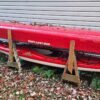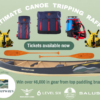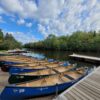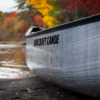It is trade show time in the Paddlesport business and because the buzz is all about our new TuffStuff material, I thought our first blog topic should focus on what people are talking about! Here are my own personal impressions on the development of this new and amazing canoe material.
ack in early 2014, we sent samples of TuffStuff to a material-testing lab in order to get some ideas of its characteristics. The results that came back to us were encouraging and because it was obvious that we were on to something good, we decided to build some prototypes. The first boats came off the production line during the summer and Nova Craft’s President Tim Miller was the first person to test one – first, on our local Thames River and then on the Grand River in Southern Ontario. While paddling, he made sure to hit as many rocks as possible and in the end, he was satisfied that we should continue with the development of this new product. In late September, Nova Craft employees paddled TuffStuff canoes during the annual staff paddle day. Everyone was very happy with how the new canoes performed – notably, the stiffness of the hulls and how well they glided through the water.
Knowing that we had a material that was suitable to paddle in both flatwater and easy moving water material was great, but we also needed to know if it would be appropriate for whitewater paddling. To that end, we decided to conduct a few in-house strength tests. You can view videos of these tests on YouTube – the first version, shot on a smart phone and a more professional, polished version here:
My eureka moment, when I really became convinced and excited about the quality of TuffStuff, was when Tim and I stood on the bottom of a TuffStuff Expedition Canoe and it gave absolutely no sign of being under stress. Neither the hull material, nor the gelcoat showed any signs of failing. Most remarkable to me was the fact that the hull didn’t even make a sound as 460 pounds of big-boned fat blokes bounced up and down on the boat. The other tests involving bending samples in a vice and pounding the bottom of a canoe with a sledgehammer only convinced me further of its quality.
Since the material passed these tests with flying colours, we decided that something more extreme was required. A lot more extreme. See The Evolution of TuffStuff Part 2.






